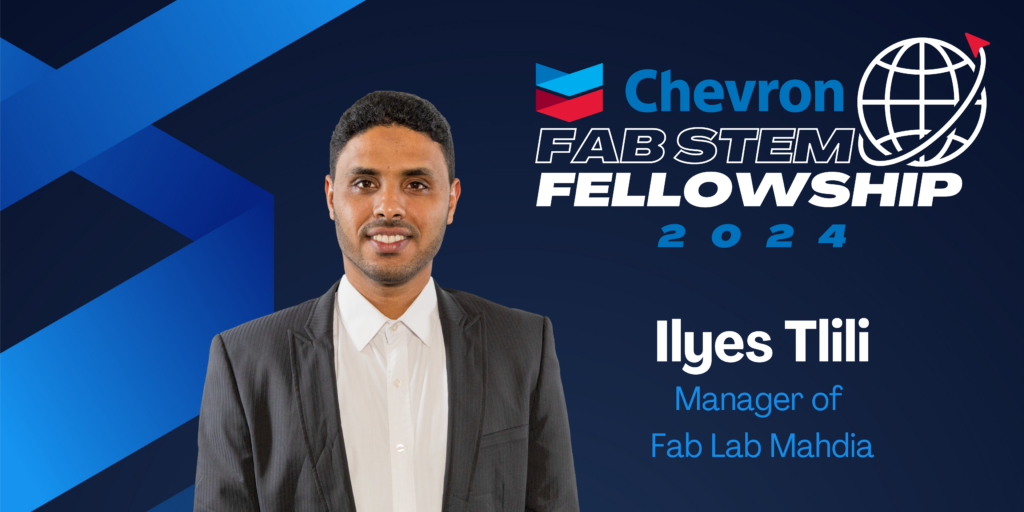
“Equity and inclusion are integral; I ensure equal access to resources, embrace diverse perspectives, and create a safe, respectful space where every student feels empowered and heard. Ultimately, I aim to instill a passion for learning, encouraging students to confidently apply their skills and knowledge.”
Meet 2024 Chevron Fab STEM Fellow Ilyes Tlili
Since starting his journey in STEM education and digital fabrication in 2018, Ilyes Tlili has amassed over five years of experience in 3D printing, electronic projects, and utilizing key fabrication technologies like laser cutting. This expertise has been pivotal in hosting, organizing, and managing more than 200 STEM training sessions to date. Beyond facilitating learning, he has played a crucial role in training trainers under the Darnet social project, with the goal of integrating STEM methodology and fabrication technology (fast prototyping) into the public education sector—a venture that has begun to bear fruit. In his current capacity, Ilyes is passionately involved in mentoring students, helping them to transform their innovative ideas into tangible prototypes using available resources and fabrication technology. This endeavor has led to more than 25 projects reaching the prototype phase in the last two years alone. His approach not only makes the world of digital fabrication accessible to students but also encourages them to engage deeply with their creative and problem-solving abilities. Ilyes’ commitment to STEM education, enriched by his own hands-on experience with 3D printing and laser cutting, is rooted in a firm belief in its power to inspire and shape future generations.
Notable Work
Among our notable projects in STEM education and digital fabrication, two stand out significantly. The first is the development of an educational robot named “Clever.” This project was brought to life through a collaborative effort with two computer science students and two electrical engineering students. Together, we addressed the challenge of inadequate equipment, computers, and internet connectivity in rural areas, which poses a significant barrier to learning robotics and programming. Clever is designed to host its own server and block editor, making it accessible via any smartphone. It features a visual programming interface, tutorials, example codes, and a virtual remote control, alongside all necessary sensors and components, including an integrated server and access point. This innovation makes STEM education more accessible and engaging for students without the need for extensive resources.
The second significant accomplishment in his journey with STEM education and digital fabrication is the creation and implementation of the “Path to Innovation” activity. This program is intricately designed to take curious participants on a journey to becoming creators and inventors. It’s a testament to my holistic approach to STEM education, weaving together games, discovery activities, real-world problem solving, and a culminating open event akin to a fair where participants pitch their solutions to the public. This activity encapsulates the essence of my teaching philosophy, emphasizing the importance of curiosity, fun, experimentation, collaboration, and knowledge sharing.
